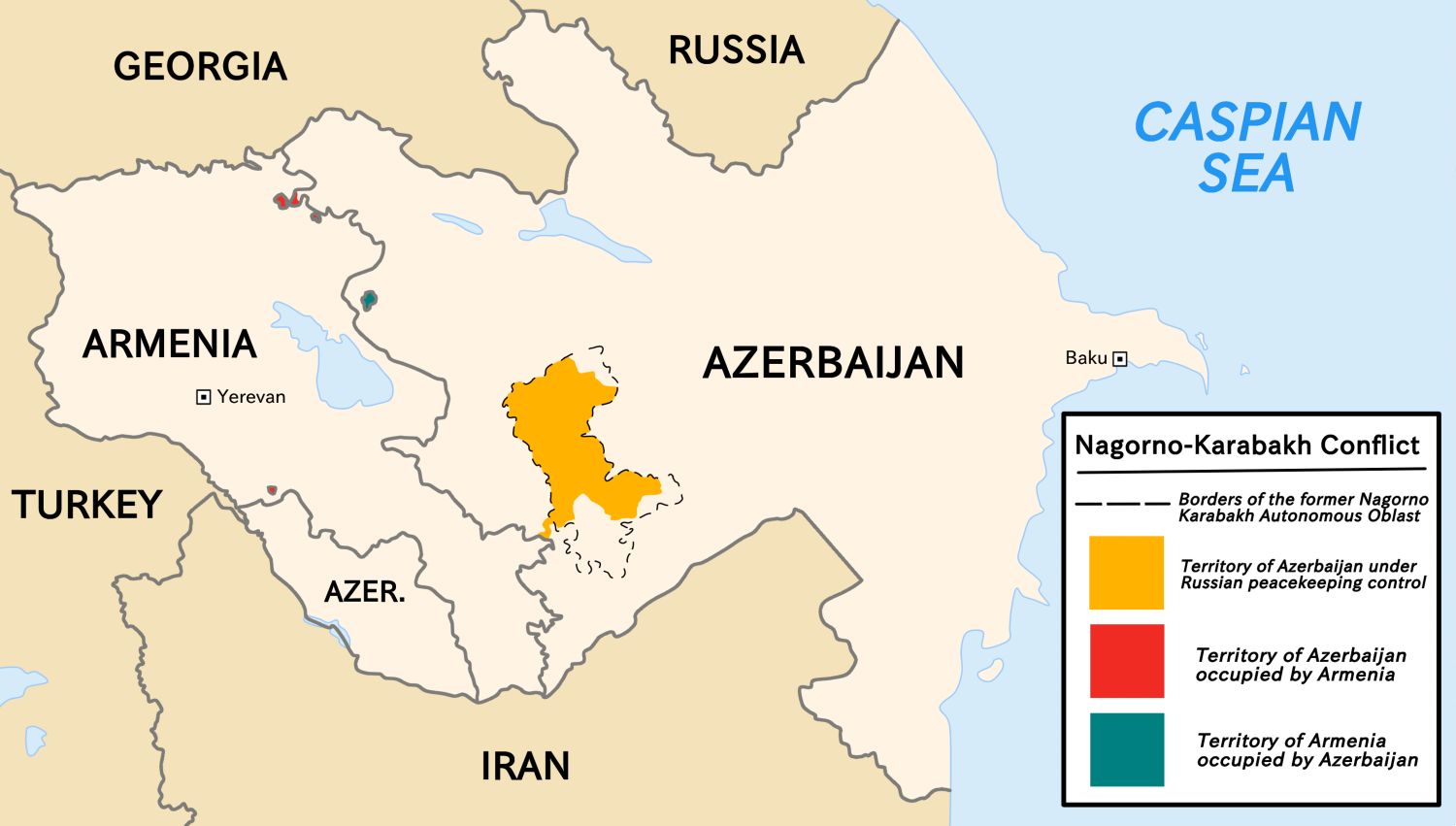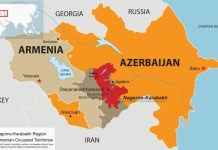Azerbaijani President Ilham Aliyev said on Thursday that Armenia had allegedly planted over 1 million mines across the Azerbaijani territory and that clearance works may take nearly 30 years and over $25 million.
The sixth Conference on Interaction and Confidence-Building Measures in Asia (CICA) is taking place from Wednesday-Thursday in the Kazakh capital of Astana.
“Azerbaijan is among the most mine-contaminated countries in the world because Armenia laid more than 1 million mines on the Azerbaijani territory during the occupation, according to preliminary data. The international experts assess that Azerbaijan will need almost 30 years and more than $25 billion to resolve the mine issue,” Aliyev said on the sidelines of the CICA summit.
The CICA is a multinational forum for advancing cooperation through peace, security, and stability in Asia. It was founded in 1999 and includes 27 countries, namely Afghanistan, Azerbaijan, Bahrain, Bangladesh, Cambodia, China, Egypt, India, Iran, Iraq, Israel, Jordan, Kazakhstan, Kyrgyzstan, Mongolia, Pakistan, Palestine, Qatar, South Korea, Russia, Sri Lanka, Tajikistan, Thailand, Turkey, the United Arab Emirates, Uzbekistan, and Vietnam.
Earlier, President Ilham Aliyev had said that a peace agreement between Baku and Yerevan could be reached by the end of 2022.

“If there is goodwill on the part of Armenia, a peace treaty may be signed by the end of the year. Time passes, and our initiatives are not moving forward easily, although the first meeting of foreign ministers did not bring specific results. However, I think that it is a positive step. I think that the working groups of the two countries will start working on the peace treaty should the decision be made in the near future, and we will be able to reach the agreement by the end of the year,” Aliyev told Azerbaijani media in Prague.
The president added that “neither the Armenian side nor the European Council has questions regarding the five principles declared by the Azerbaijani side.” These five principles include mutual recognition of sovereignty, inviolability of international borders and political independence of each side; mutual confirmation of the absence of territorial claims; refraining from threats in interstate relations; delimitation and demarcation of the state border, the establishment of diplomatic relations; and unblocking of transport, communications, and cooperation in other areas.
In the night from September 12-13, new clashes broke out on the Armenian-Azerbaijani border in an area unrelated to the breakaway Nagorno-Karabakh region (also known as the self-proclaimed Republic of Artsakh). Baku and Yerevan accused each other of ongoing shelling and reported losses in their ranks.
By the morning of September 13, the parties agreed on a ceasefire. Grigory Karasin, the head of the Russian upper house’s foreign affairs committee, told Sputnik that a truce was achieved thanks to Russia’s efforts, including a conversation between Russian President Vladimir Putin and Armenian Prime Minister Nikol Pashinyan.
The Collective Security Treaty Organization (CSTO) reached an agreement to send a mission led by CSTO Secretary General Stanislav Zas to Armenia.
- Via Sputnik News Agency
- Follow EurAsian Times on Google News





